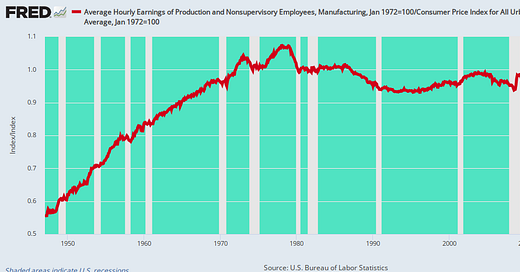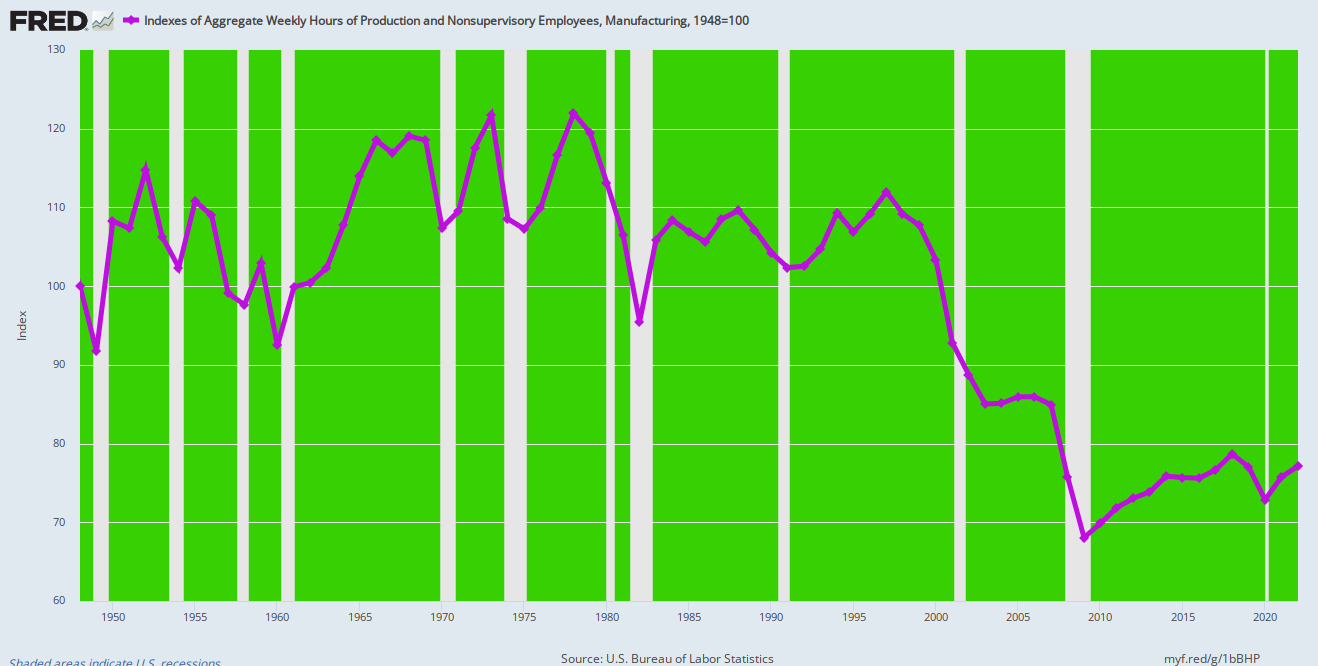It turns out that chapter 7 of the gospel of Matthew has more than passing relevance to the rotten state of monetary policy in this day and age. As the good book says in verses 18 and 20:
A good tree cannot bring forth evil fruit, neither can a corrupt tree bring forth good fruit…. Wherefore by their fruits ye shall know them.
The Fed is as captured and corrupted as they come on the banks of the Potomac. Wherefore, by the rotten fruits of monetary policy as it has been practiced by America’s central bankers, especially since the Greenspan era, you shall know the perfidy of the Eccles Building. That is, the Fed has been all-in for Wall Street but has done nothing at all for main street—except to stoutly thwart the kind of historic gains that were the hallmark of middle-class prosperity 50 years ago.
With respect to the latter, the US manufacturing sector was the leading edge of middle-class prosperity during the halcyon times after WWII. Between 1947 and 1972, for instance, inflation-adjusted real wages in manufacturing grew by 81% or 2.4% per annum. But since the Fed got into the fiat money business after Nixon’s trashing of the gold-backed dollar at Camp David in August 1971, not so much. The level of real manufacturing wages has essentially been flat as a board for the last 50 years.
Average Inflation-Adjusted Hourly Earnings of Manufacturing Workers, 1947 to 2023
Moreover, there is no statistical quirk here—such as the possibility that flattish real wages after the 1970s accommodated a sustained growth in total workers and hours employed in the manufacturing sector. Again, the upward trend in manufacturing labor utilization after WWII was stopped cold in the late 1970s.
To wit, between 1948 and 1978, the index of total hours employed in the manufacturing sector rose by 22%. During the last four decades, however, labor hours deployed to manufacturing production have actually shrunk steadily and are now lower by 23%.
Index of Hours Worked in the Manufacturing Sector, 1948 to 2022
Nor can it be said that miracles of productivity growth permitted manufacturing output to rise, even as employment was falling in recent decades. Actually, after rising by a staggering seven-fold or 3.5% per annum between 1948 and 2005, that’s all she wrote.
Keep reading with a 7-day free trial
Subscribe to David Stockmans Contra Corner to keep reading this post and get 7 days of free access to the full post archives.




